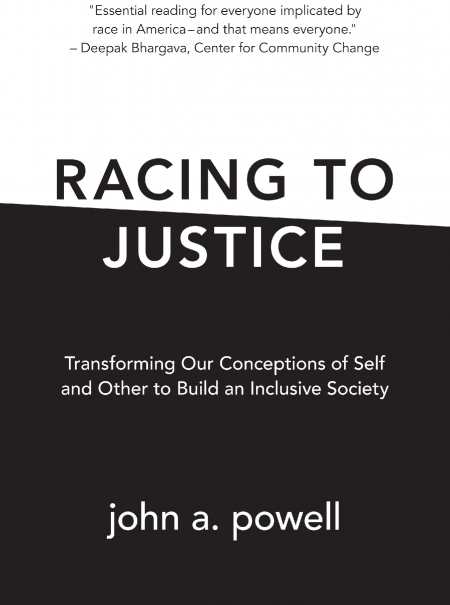
Racing to Justice
Transforming Our Conceptions of Self and Other to Build an Inclusive Society
The United States Supreme Court’s October 2012 term opened with a flutter. Media buzzed about how the high court might rule on two divisive race-related issues: the Voting Rights Act and affirmative action at the University of Texas. During a time when courts—and average citizens—argue the nation is post-racial, the rulings are likely to be revealing. This collection of scholarly essays argues the country is not post-racial yet, not nearly.
Racing to Justice insists that there are clues, including racial disparities around health, housing, and education, that the country is not post-racial. In fact, there is a salient racial hierarchy, and the sprint toward a post-racial nation encourages ideologies that either ignore or fuel that hierarchy. The author asserts that multiracial and color-blind stances, in particular, can render racism “unexamined and intact.” He maintains that some argue race will cease to be a problem when society becomes flexible with its racial categories. Yet, using multiple designations has not led the US or countries like Brazil toward racial justice.
Powell, who was recently named the Robert D. Haas Chancellor’s Chair in Equity and Inclusion at the University of California at Berkeley, suggests society will chip away at the racial hierarchy if it examines and contests it. But that does not seem to happen in the judicial system.
When justices don color-blind lenses, they assume race-neutrality as if acknowledging the color of someone’s skin is the problem. In doing so, the court suggests that race should not be a factor for any reason. In a society influenced by whiteness, the color-blind theory does not work. “Rather than being race-neutral, color blindness further naturalizes the norm of whiteness and white privilege without even referring to race,” claims Powell. Interestingly, the author cites research that questions the validity of a color-blind stance. Neuroscientists say racism is often unconscious and that one can be racist or bias in one situation and fair and racially tolerant in another.
To illustrate how the court handles race, Powell cites cases. In Parents Involved in Community Schools v. Seattle School District No. 1, two school districts in Seattle tried to use school assignments to create a diverse student body, but one of the justices cited Brown vs. The Board of Education and said race should not be used “even for very different reasons” than Brown.
If Powell’s theory bears out, the chief justices could rule that a post-racial society does not need the Voting Rights Act. They could also ignore racial history and present racial hierarchies and decide that Abigail Fisher was discriminated against when the University of Texas attempted to welcome a racially diverse freshman class in 2008 that did not include her.
Reviewed by
Kaavonia Hinton
Disclosure: This article is not an endorsement, but a review. The publisher of this book provided free copies of the book and paid a small fee to have their book reviewed by a professional reviewer. Foreword Reviews and Clarion Reviews make no guarantee that the publisher will receive a positive review. Foreword Magazine, Inc. is disclosing this in accordance with the Federal Trade Commission’s 16 CFR, Part 255.
